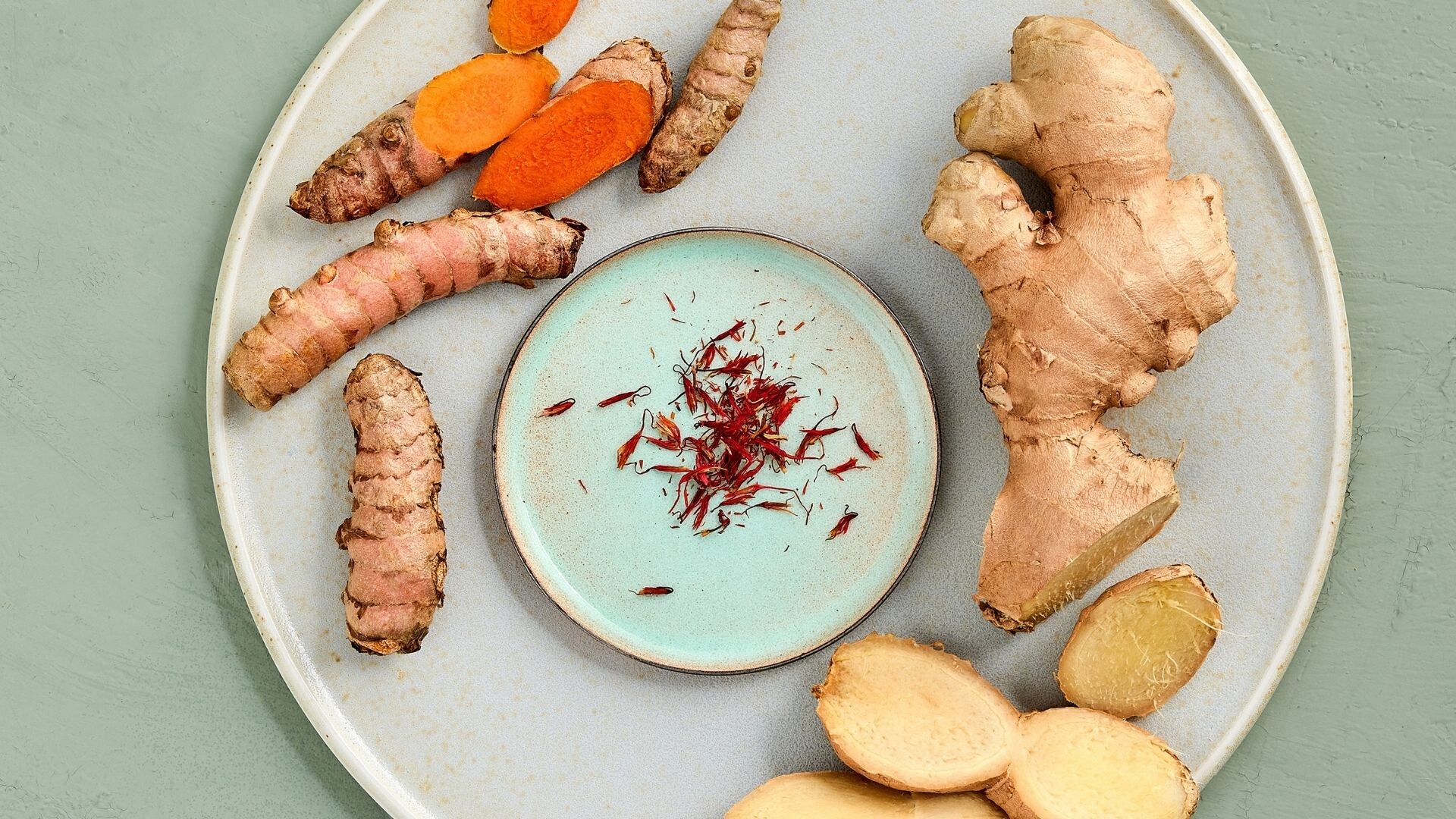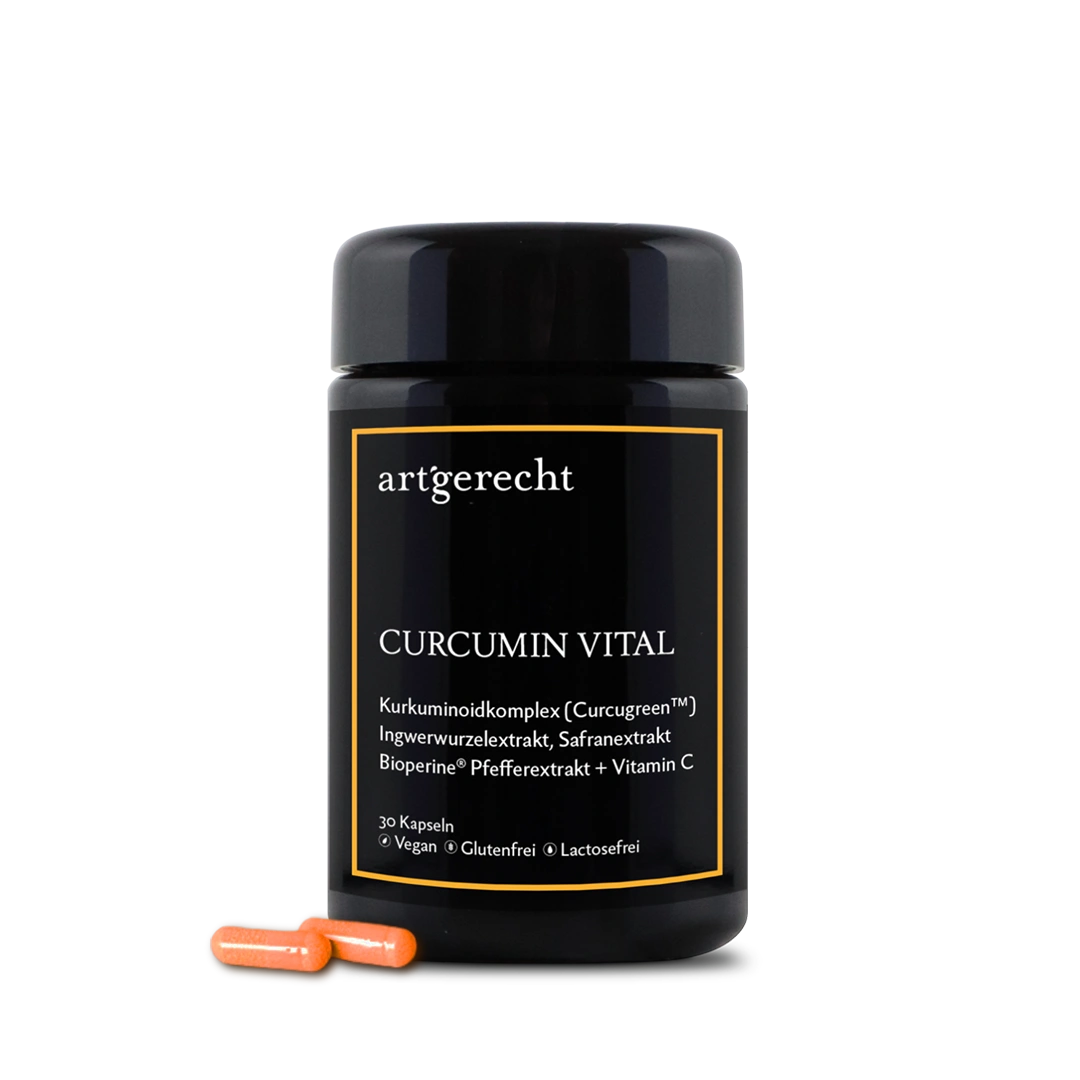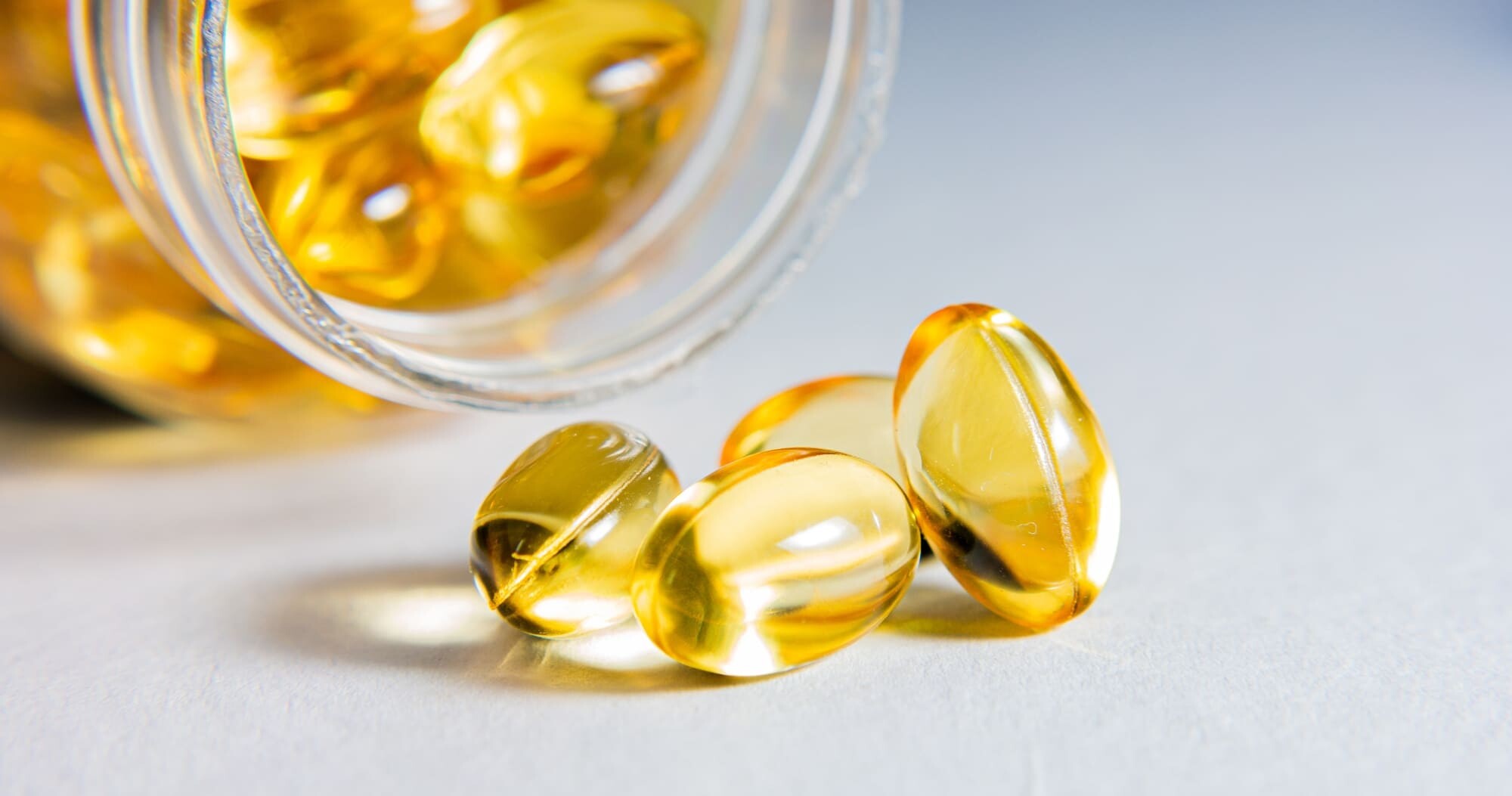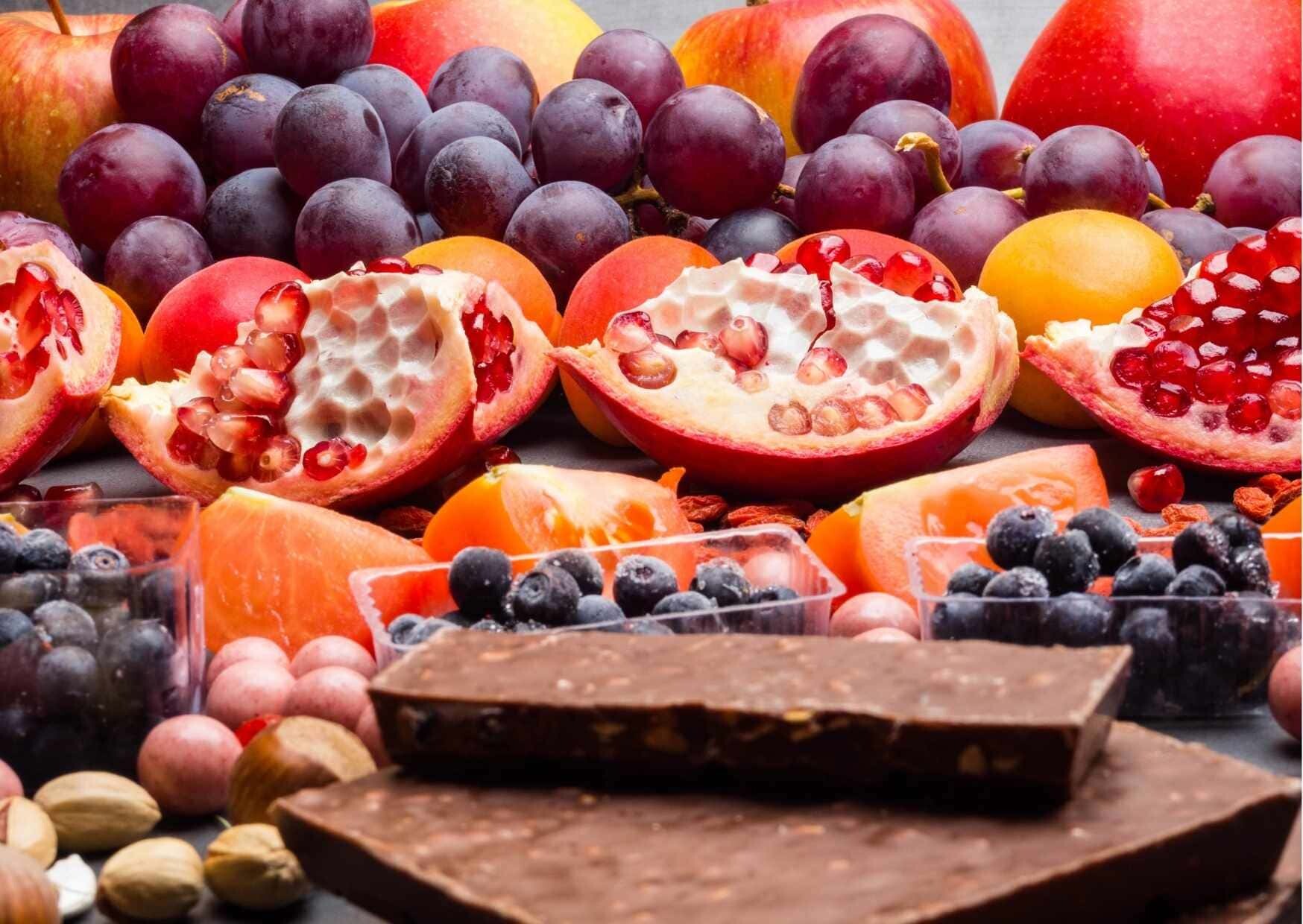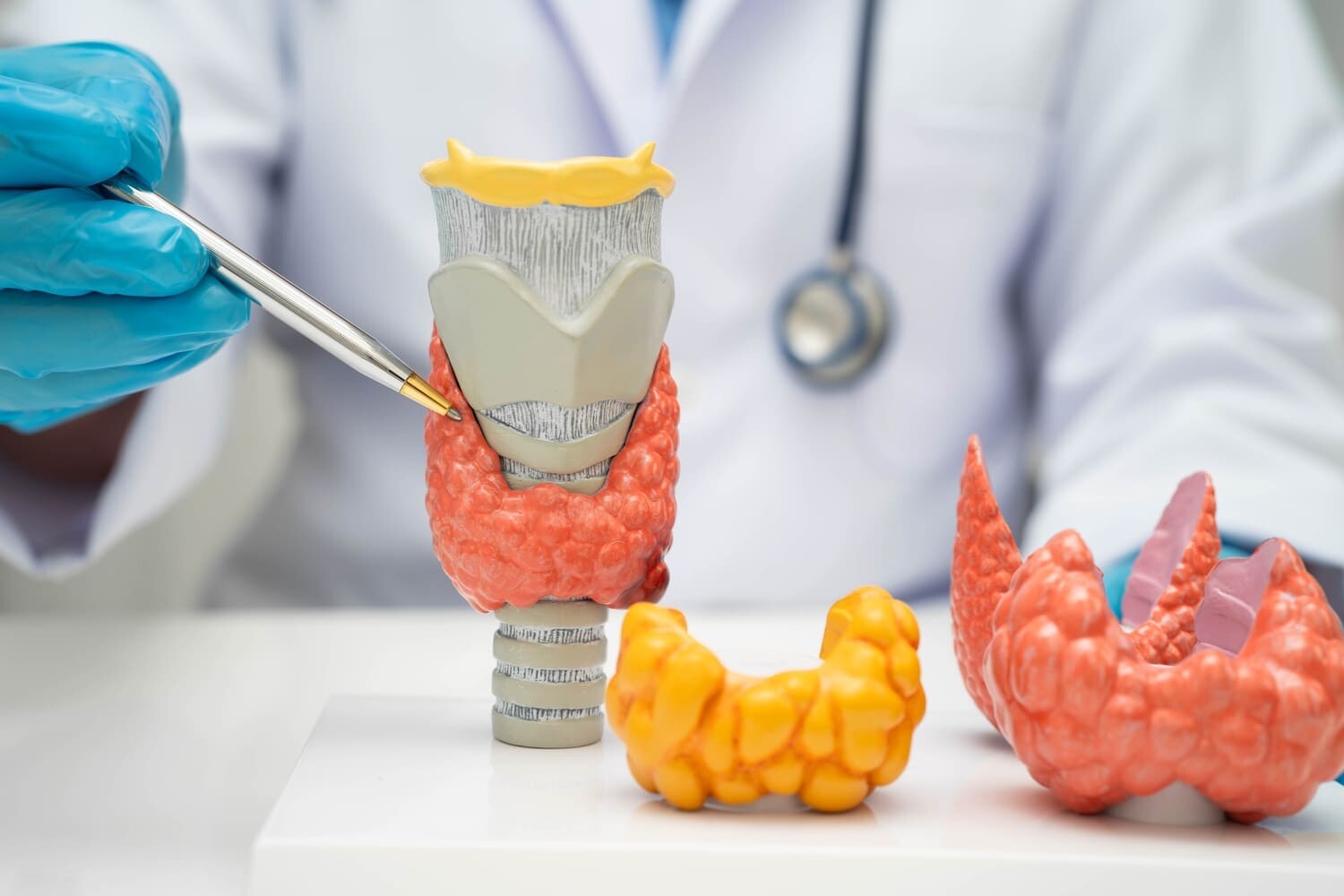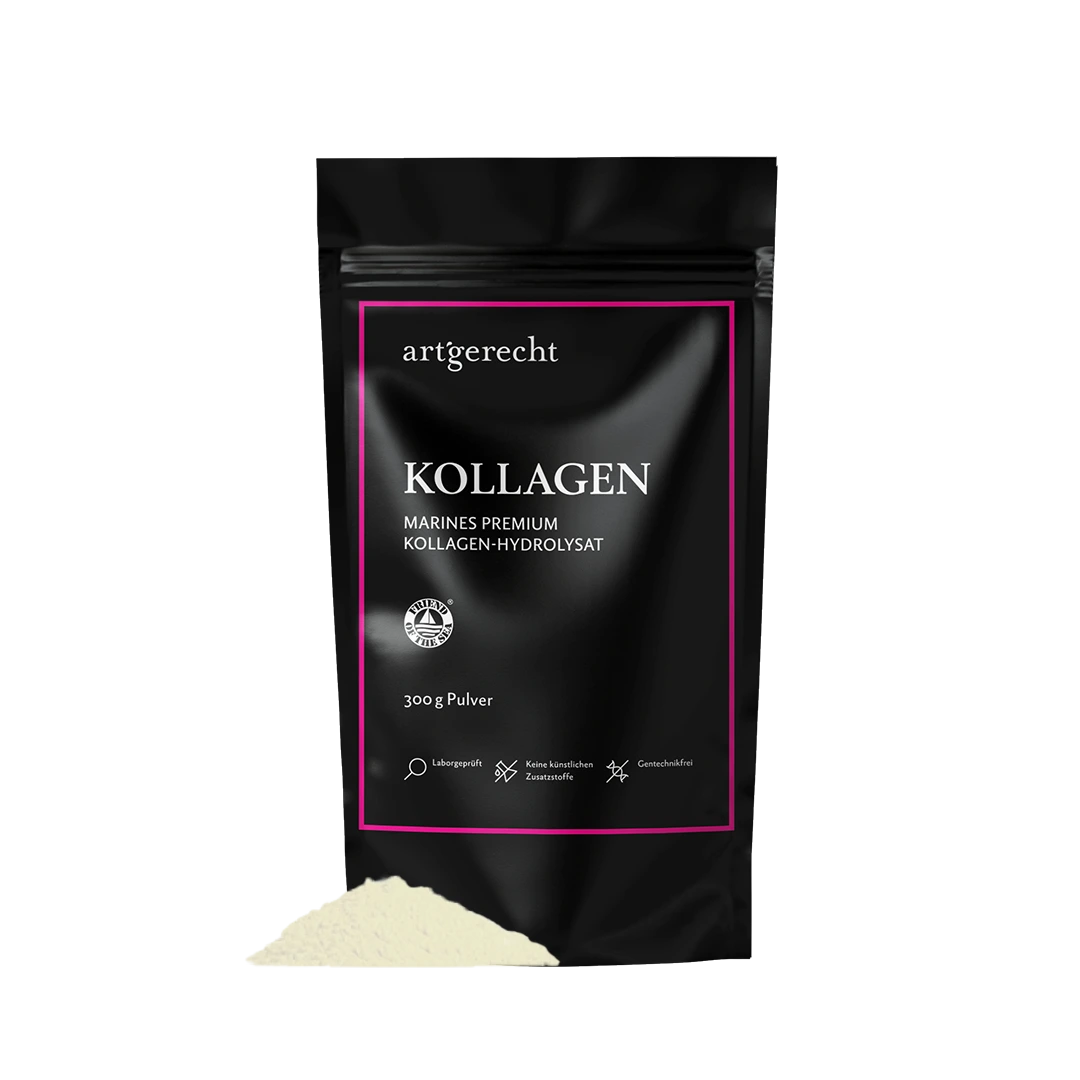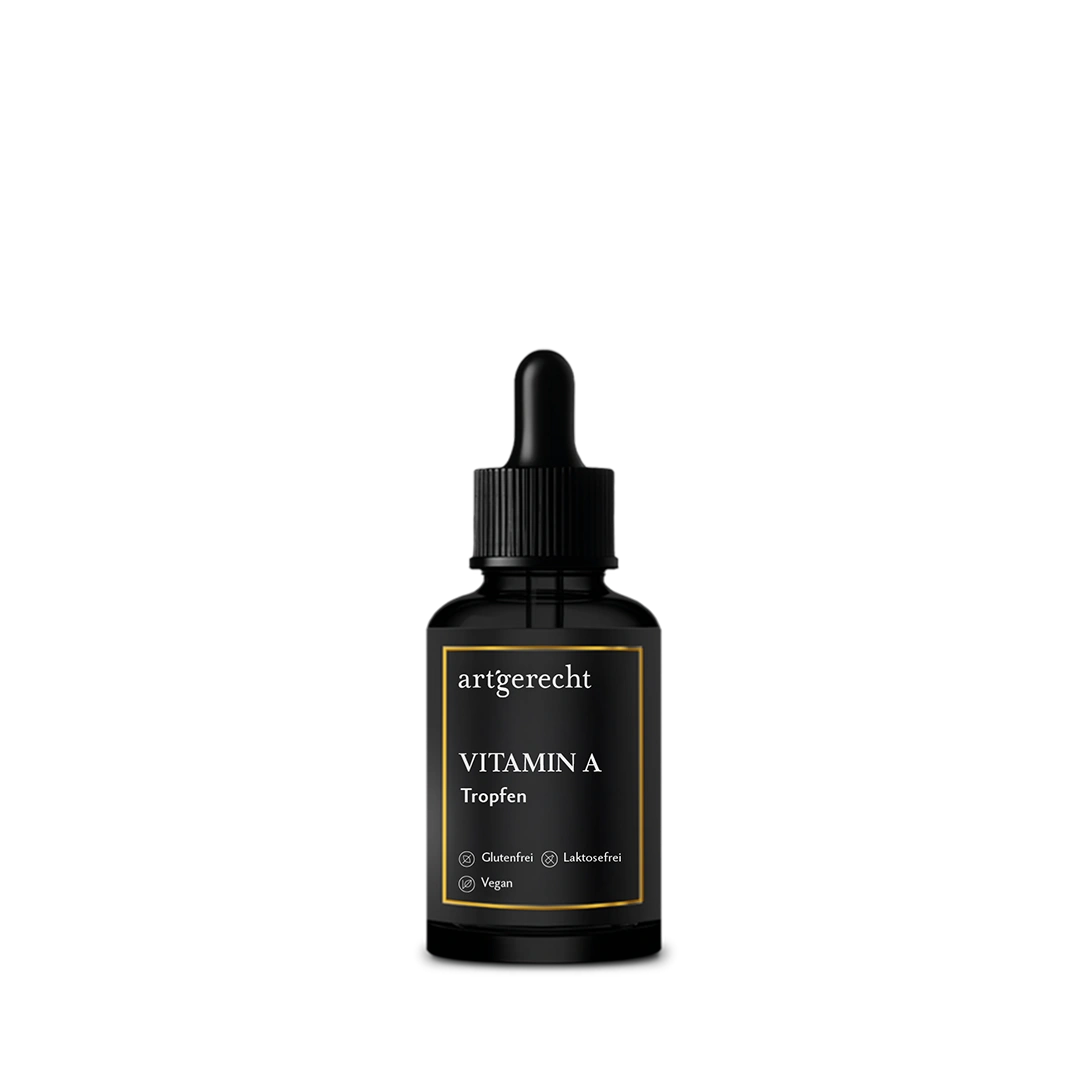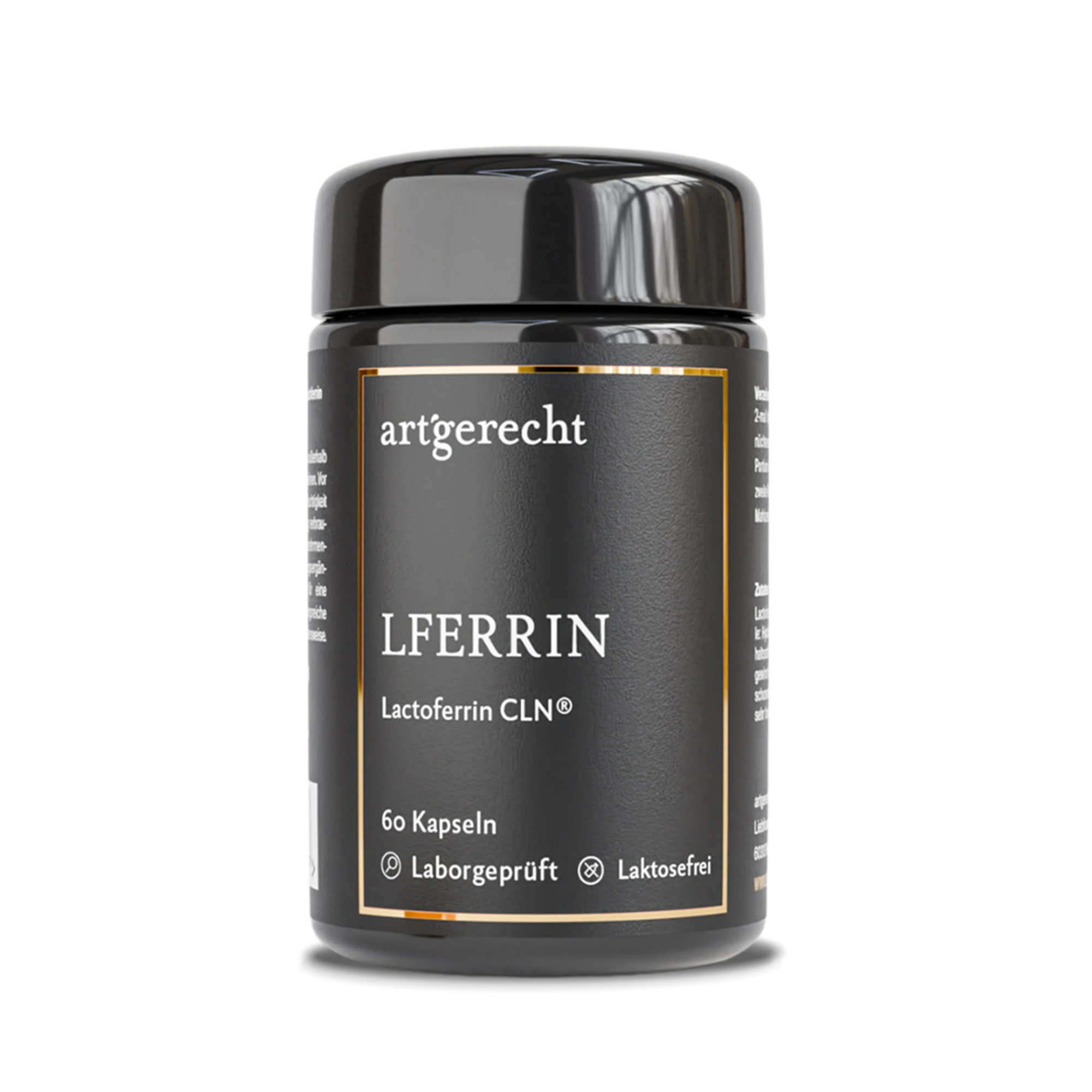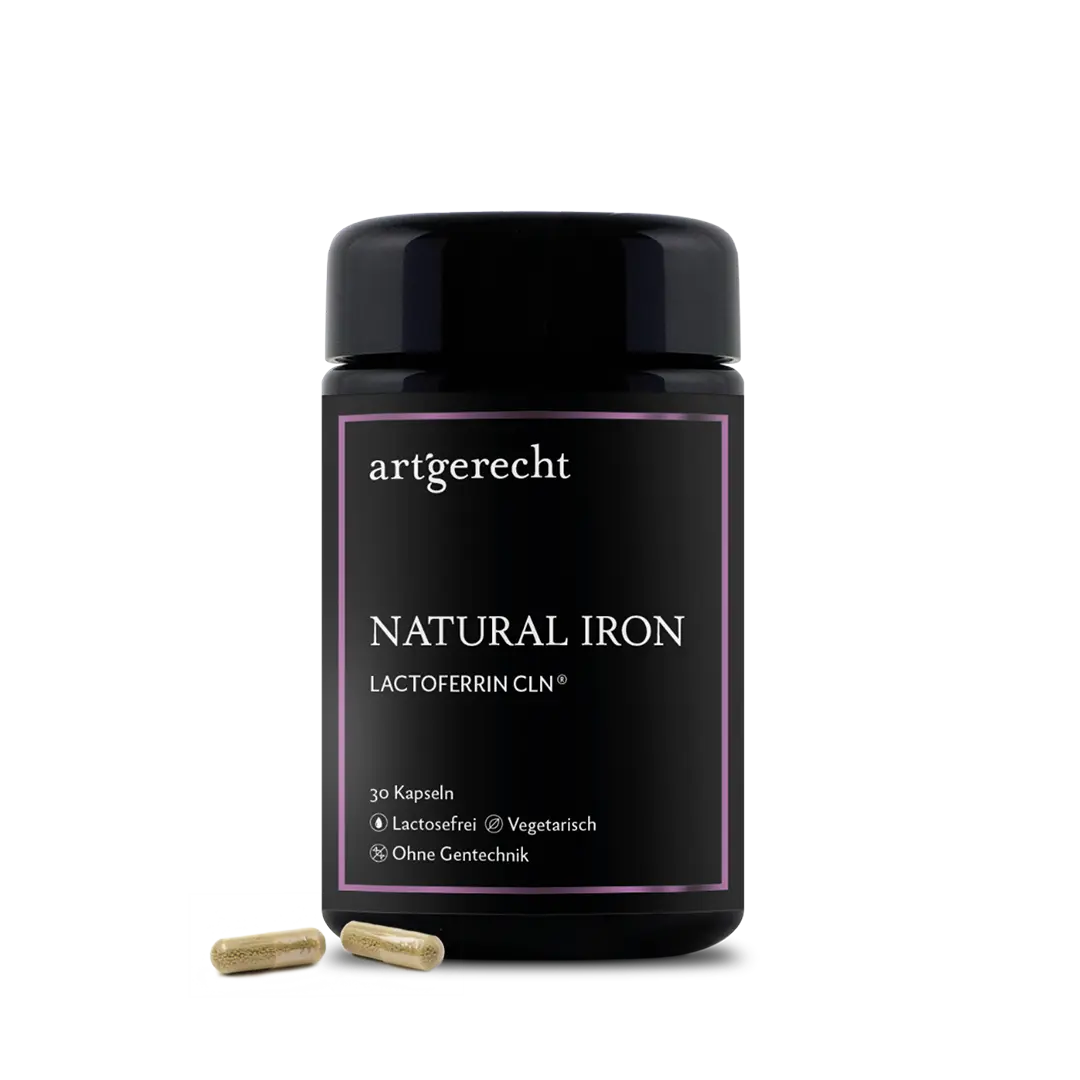- The active components
- Antientzündliche Wirkung
- Why are anti-inflammatory properties important?
- Improved detoxification capacity
- Why is improved detoxification important?
- Positive influence on stress
- Mood-lifting and anxiety-relieving effect
- Turmeric and saffron: Combined for a healthy psyche
- Good for your digestion
- Why is good digestion important?
- Conclusion
- Literature:
The world of plant substances is very diverse and they have been our medicine since the beginning of mankind. If you look at the most common problems in modern society, you always come across the same names in studies: Turmeric, ginger & saffron. They therefore seem to play a decisive role not only in the kitchen, but also in health. But what are the effects of these time-honored medicinal plants?
The active components
All three plants have far more than just one active ingredient. In addition to the well-known curcumin, turmeric in particular contains more than 100 different active components, which are known as curcuminoids or tumerones (Aggarwal & Harikumar, 2009). In ginger, the two best-known main components are paradol and shogaol, which belong to the gingerols (Tjuml(Tjendraputra, Tran, Liu-Brennan, Roufogalis, & Duke, 2001) and in Safran they are Safranal, Crocetin and Crocin (Boskabady & Farkhondeh, 2016). All three plants have different modes of action.
Antientzündliche Wirkung
Probably the best-known effect – of turmeric in particular, is the inhibition of the inflammatory messenger substance TNF-alpha and interleukin 6, which is why an pain-inhibiting effect has also been described (Prasad, Gupta, Tyagi, & Aggarwal, 2014) (Tham et al., 2010). For example, ginger has a ähnliche effect like the painkiller diclofenac and inhibits so-called COX enzymes, which are involved in the inflammation.strong>development of anti-inflammatory substances (Mazidi, Gao, Rezaie, & Ferns, 2016). Safran also shows inflammatory effects, similar to the cortisone preparation Dexam. (Boskabady & Farkhondeh, 2016).
Why are anti-inflammatory properties important?
A short-term increase in inflammatory messengers in physical injuries and infectionsis essential for survival. However, recent research has shown that certain social, environmental and lifestyle factors can promote chronic low-grade inflammation. It is considered to be the cause of a range of modern, chronic diseases, such as cardiovascular diseases, diabetes mellitus, chronic kidney disease, non-alcoholic fatty liver disease and autoimmune and neurodegenerative diseases. (Furman et al., 2019) So if you find a way to reduce the chronic presence of inflammatory messenger substances, you can reduce disease risks (Straub & Schradin, 2016).
Improved detoxification capacity
Turmeric can improve liver detoxification as well as the production of the body's own antioxidants, which are necessary for detoxification (Dulbecco & Savarino, 2013). Ginger also promotes liver detoxification, but at the same time has a protective effect;for the liver cells, which supports detoxification performance (Emrani, Shojaei, & Khalili, 2016). In addition, ginger is able to promote the detoxification of heavy metals (Mężyńska & Brzóska, 2019) (Emrani et al, 2016) (Al‐Ameer, 2012; Baiomy & Mansour, 2016; Egwurugwu et al, 2007; Mohammad, Mustafa, & Abdulqader, 2013; Srinivasan, 2017). Saffron itself has antioxidant properties, but like turmeric it ensures that more endogenous antioxidants are produced;body's own antioxidants are formed and protect the liver against the free radicals (Khorasany & Hosseinzadeh, 2016).
Why is improved detoxification important?
The human body has an amazingly efficient detoxification system, which is mainly located in the liver. In healthy people, these detoxification processes are in balance and function well most of the time. However, some diseases, vitamin deficiency, contact with tobacco smoke, alcohol and drugs disrupt the balance between the detoxification enzymes. In addition, modern life is characterized by the use of chemicals. The current count of individual substances is now approaching 100 million, and humans are more or less exposed to a large number of them (Mumtaz, 2015). Therefore, a well-functioning liver detoxification is more important than ever to maintain this sensitive balance.
Positive influence on stress
Curcumin reduces stress as it has a direct influence on the hormonal stress axis and regulates it (Xu Y, Ku B, Tie L, et al., 2006). Saffron also reduces the stress axis activity (Shafiee, 2018). There is evidence that curcumin improves brain function (Belviranli, 2013), as well as the formation of new neurons and their connections (Xu Y, Ku B, Tie L, et al, 2006) and reduces anxiety (Lopresti & Drummond, 2017).
Mood-lifting and anxiety-relieving effect
Saffron, with anti-inflammatory, stress-reducing and antioxidant properties, can reduce depressive symptoms (Shafiee, 2018). But how does it work?
Curcumin and saffron stimulate the formation of brain-derived neurotrophic factor (BDNF) (Shafiee, 2018): In the central nervous system, it triggers the new formation of nerve cells and their connections. Curcumin increases BDNF production (Xu Y, Ku B, Tie L, et al, 2006) and thus improves memory performance, at the same time more neurons in the „center of memory“ anxiety center (amygdala) is shut down and stress is reduced (Mattson MP, 2004). Curcumin (with peperin from black pepper) increases the amount of neurotransmitter serotonin (glucocorticoid hormone).ckshoromone) and dopamine (curiosity and drive hormone) in the central nervous system (Kulkarni SK, 2008).
Turmeric and saffron: Combined for a healthy psyche
In the clinical placebo-controlled study by Lopresti & Drummond (2017),Curcuma and saffron extracts were used in combination in people with depressive disorders - and with success. The combination of curcumin and saffron has been shown to reduce depressive anxiety-based symptoms such as poor concentration, reduced self-esteem, sleep disturbances, anxiety, negative thinking about the future, restlessness, loss of energy, great tiredness or psychomotor inhibitions. Safran alone has even been shown in studies to have a comparable effect to the substance Fluox (Shafiee, Arekhi, Omranzadeh, & Sahebkar, 2018). It is important to note that the dosage of the extracts was proportionally highly adjusted, which makes consultation with a therapist or doctor absolutely necessary.
.Good for your digestion
Turmeric, ginger and saffron have been known for thousands of years for their positive properties on digestion.digestion, which is why they have found a firm place in the kitchen as spices. And rightly so, as studies show.
Turmeric promotes digestion, stimulates the liver and biliary system, promotes the gallbladder, inflates the gallbladder, stimulates the liver and gallbladder;thereby promoting the production and release of bile, which plays an important role in fat digestion (Dulbecco & Savarino, 2013). This leads to protective properties in relation to bile stones and fatty liver. However, turmeric has also been shown to have positive therapeutic effects in chronic inflammatory bowel disease and liver fibrosis (Dulbecco & Savarino, 2013).
Ginger provides increased intestinal peristalsis, which is an important property for people who suffer from constipation (Micklefield et al., 1999). In addition, regular ginger consumption leads to natural gastric mucosal protection (Nikkhah Bodagh, Maleki, & Hekmatdoost, 2019).
Saffron shows a relaxing effect on the intestines and is even able to reduce appetite and thus also weight (Moshiri, Vahabzadeh, & Hosseinzadeh, 2015).
Why is good digestion important?
Good digestion not only ensures sufficient nutrient intake, but also ensures that we live in a good symbiosis with our intestinal flora. If too many food components remain undigested, this can promote the development of dysbiosis, which is associated with a variety of diseases, such as ulcerative colitis.ulcerative colitis, Crohn's disease, celiac disease and irritable bowel syndrome, obesity, type 1 and 2 diabetes, (Brown, DeCoffe, Molcan, & Gibson, 2012).
Conclusion
Stress, persistent and chronic anxiety as well as an active immune system are inevitably associated with physical and mental stress.physical and psychological stress, which can lead to poor concentration, reduced self-esteem, sleep disturbances, anxiety, restlessness, lack of energy or fatigue. The combination of turmeric, saffron and ginger can act as a natural „mood enhancer” and help to restore physical and mental balance.strong>balance and to integrate more lightness and joy into life.
Literature:
Aggarwal, B. B., & Harikumar, K. B. (2009). Potential therapeutic effects of curcumin, the anti-inflammatory agent, against neurodegenerative, cardiovascular, pulmonary, metabolic, autoimmune and neoplastic diseases. International Journal of Biochemistry and Cell Biology, 41(1), 40–59. https://doi.org/10.1016/j.biocel.2008.06.010
Belviranli M, Okudan N, Atalik KEN, Öz M. Curcumin improves spatial memory and decreases oxidative damage in aged female rats. Biogerontology. 2013;14(2):187-196. doi:10.1007/s10522-013-9422-y
Boskabady, M. H., & Farkhondeh, T. (2016). Immunomodulatory Effects of Crocus sativus L . and its Main Constituents, 1094(April), 1072–1094.
Brown, K., DeCoffe, D., Molcan, E., & Gibson, D. L. (2012). Diet-induced dysbiosis of the intestinal microbiota and the effects on immunity and disease. Nutrients, 4(8), 1095–1119. https://doi.org/10.3390/nu4081095
Dulbecco, P., & Savarino, V. (2013). Therapeutic potential of curcumin in digestive diseases, 19(48), 9256–9270. https://doi.org/10.3748/wjg.v19.i48.9256
Emrani, Z., Shojaei, E., & Khalili, H. (2016). Ginger for Prevention of Antituberculosis-induced Gastrointestinal Adverse Reactions Including Hepatotoxicity: A Randomized Pilot Clinical Trial. Phytotherapy Research, 30(6), 1003–1009. https://doi.org/10.1002/ptr.5607
Furman, D., Campisi, J., Verdin, E., Carrera-Bastos, P., Targ, S., Franceschi, C., … Slavich, G. M. (2019). Chronic inflammation in the etiology of disease across the life span. Nature Medicine, 25(12), 1822–1832. https://doi.org/10.1038/s41591-019-0675-0
Khorasany, A. R., & Hosseinzadeh, H. (2016). Therapeutic effects of saffron (Crocus sativus L.) in digestive disorders: a review. Iranian journal of basic medical sciences, 19(5), 455–469. Retrieved from http://www.ncbi.nlm.nih.gov/pubmed/27403251%0Ahttp://www.pubmedcentral.nih.gov/articlerender.fcgi?artid=PMC4923465
Kulkarni SK, Bhutani MK, Bishnoi M. Antidepressant activity of curcumin: Involvement of serotonin and dopamine system. Psychopharmacology (Berl). 2008;201(3):435-442. doi:10.1007/s00213-008-1300-y
Lopresti, A. L., & Drummond, P. D. (2017). Efficacy of curcumin, and a saffron/curcumin combination for the treatment of major depression: A randomized, double-blind, placebo-controlled study. Journal of Affective Disorders, 207(September 2016), 188–196. https://doi.org/10.1016/j.jad.2016.09.047
Mattson MP, Duan W, Wan R, Guo Z. Prophylactic Activation of Neuroprotective Stress Response Pathways by Dietary and Behavioral Manipulations. NeuroRx. 2004;1(1):111-116. doi:10.1602/neurorx.1.1.111
.Mężyńska, M., & Brzóska, M. M. (2019). Review of polyphenol-rich products as potential protective and therapeutic factors against cadmium hepatotoxicity. Journal of Applied Toxicology, 39(1), 117–145. https://doi.org/10.1002/jat.3709
Moshiri, M., Vahabzadeh, M., & Hosseinzadeh, H. (2015). Clinical applications of saffron (Crocus sativus) and its constituents: A review. Drug Research, 65(6), 287–295. https://doi.org/10.1055/s-0034-1375681
Mumtaz, M. M. (2015). Modeling of interactions between xenobiotics and cytochrome P450 ( CYP ) enzymes, 6(June), 1–14. https://doi.org/10.3389/fphar.2015.00123
Nikkhah Bodagh, M., Maleki, I., & Hekmatdoost, A. (2019). Ginger in gastrointestinal disorders: A systematic review of clinical trials. Food Science and Nutrition, 7(1), 96–108. https://doi.org/10.1002/fsn3.807
Prasad, S., Gupta, S. C., Tyagi, A. K., & Aggarwal, B. B. (2014). Curcumin , a component of golden spice : From bedside to bench and back. Biotechnology Advances, 32(6), 1053–1064. https://doi.org/10.1016/j.biotechadv.2014.04.004
Shafiee, M., Arekhi, S., Omranzadeh, A., & Sahebkar, A. (2018). Saffron in the treatment of depression, anxiety and other mental disorders: Current evidence and potential mechanisms of action. Journal of Affective Disorders, 227, 330–337. https://doi.org/10.1016/j.jad.2017.11.020
Straub, R. H., & Schradin, C. (2016). Chronic inflammatory systemic diseases: An evolutionary trade-off between acutely beneficial but chronically harmful programs. Evolution, Medicine, and Public Health, 2016(1), 37–51. https://doi.org/10.1093/emph/eow001
Tjendraputra, E., Tran, V. H., Liu-Brennan, D., Roufogalis, B. D., & Duke, C. C. (2001). Effect of ginger constituents and synthetic analogues on cyclooxygenase-2 enzyme in intact cells. Bioorganic Chemistry, 29(3), 156–163. https://doi.org/10.1006/bioo.2001.1208
Xu Y, Ku B, Tie L, et al. Curcumin reverses the effects of chronic stress on behavior, the HPA axis, BDNF expression and phosphorylation of CREB. Brain Res. 2006;1122(1):56-64. doi:10.1016/j.brainres.2006.09.009

